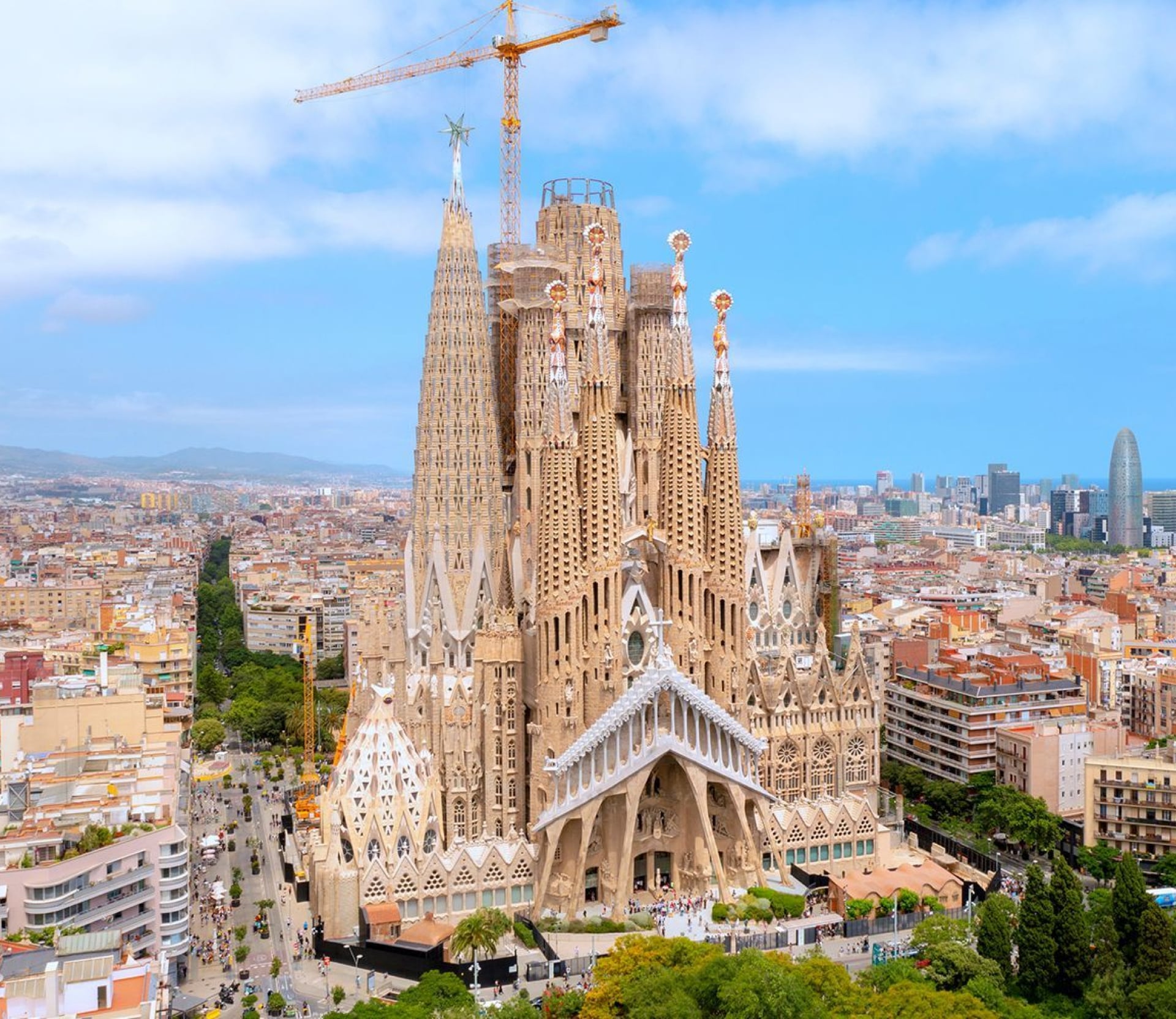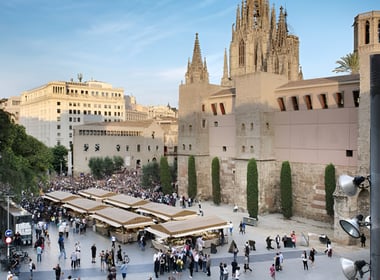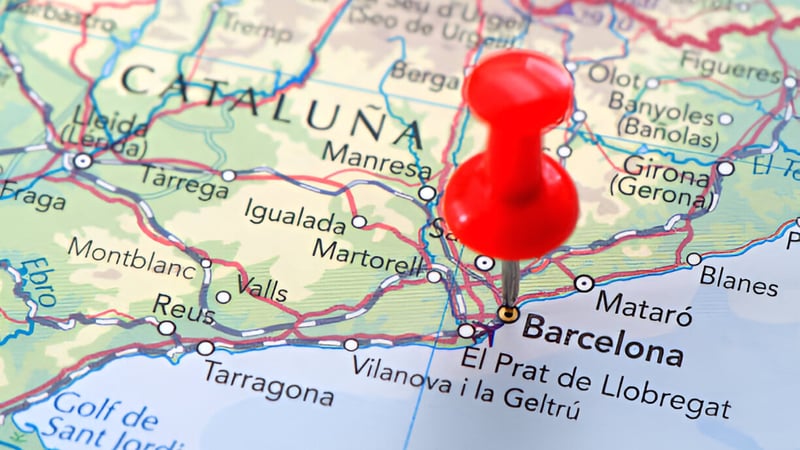İçindekiler
Barcelona is the capital and largest city of the autonomous region of Catalonia in northeastern Spain. According to 2021 data, the population of the city center was recorded at 1,620,343. By August 2024, Barcelona’s population had reached almost 1,700,000, an increase of 2.6% compared to 2023 and the highest since 1991. This increase is largely due to foreign residents. As one of the most important port cities of the Iberian Peninsula, Barcelona has a strategic importance not only for Spain but also for the entire Mediterranean basin.
The city’s sphere of influence includes a vast network of settlements called the Barcelona Metropolitan Area, comprising 36 cities and municipalities covering an area of approximately 630 km². More than 3.16 million people live in this metropolitan area, while the population of the wider metropolitan area exceeds 5 million. With this structure, Barcelona stands out as the economic and cultural center of the autonomous region of Catalonia.
Geographical Location of Barcelona
Barcelona is located on the northeast coast of Spain, on the west coast of the Mediterranean Sea. The city is surrounded by the Mediterranean Sea to the east and the Collserola Mountains to the west. The highest point of the Collserola Mountains, Tibidabo Hill (512 meters), offers a spectacular view of the city. With the Besòs River to the north and the Llobregat River to the south, the city has a geographically advantageous location.
Climate in Barcelona
Barcelona’s climate is typically Mediterranean, which makes life easy and the city livable all year round. The weather is generally clear and fresh, with around 300 sunny days a year. The average annual temperature hovers around 16°C, while the humidity is not very high despite being a coastal city.
The summer months, especially July and August, are very hot. During this period, daytime temperatures hover between 28-30°C, dropping to 20-22°C in the evenings with the sea breeze. In August, humidity rises slightly and the heat can be oppressive. Rainfall in summer is rare and usually comes in the form of short showers.
Spring (March-May) and fall (September-November) are the best times to visit Barcelona. During these seasons, temperatures range between 15-25°C and the weather is pleasant. The months of May and October in particular offer the perfect climate for both sightseeing and outdoor activities.
The winter months are quite mild compared to Northern Europe. Daytime temperatures in December-February are usually between 12-17°C and rarely drop below 5°C. Precipitation increases during this period, but in the form of short showers rather than prolonged rains. Snowfall is almost non-existent in the city center, although the nearby Collserola Mountains occasionally see snow.
The sea water temperature ranges between 23-26°C in summer and drops to around 13-15°C in winter. The beach season usually lasts from late May to early October, but even on sunny winter days it is possible to see people walking on the beach.
Administrative Structure of Barcelona
Barcelona is the capital of Catalonia, one of Spain’s 17 autonomous regions. The autonomous region of Catalonia has its own parliament, government and autonomous administration structure. With the 1979 autonomy status, Catalonia has been empowered to make its own decisions in many areas such as education, health, culture and language policies.
Management System
The Municipality of Barcelona (Ajuntament de Barcelona) has been governed since 1979 by a democratically elected mayor and city council. The city is divided into 10 administrative districts and each district has its own local government bodies.
Historical and Cultural Importance of Barcelona
Barcelona’s rich history dates back to the 3rd century BC, some 2300 years before the present day. The first settlers of the city were known as Iberians and they founded the small settlement of Barkeno. When the Romans came to the region in 218 BC, they decided to make it an important center due to its strategic location. Founded in 15 BC during the reign of Emperor Augustus under the name Colonia Iulia Augusta Faventia Paterna Barcino, the Roman colony formed the basis of today’s Barri Gòtic (Gothic Quarter).
After the fall of the Roman Empire, the city came under the control of the Visigoths in the 5th century and the Muslim Arabs for a short time in the 8th century. In 801, the Frankish Empire took over the city and established the Count of Barcelona. This was the beginning of the city’s rise in the Middle Ages.
In the 11th and 12th centuries, Barcelona became an important center for Mediterranean trade. In 1137, the merger with the Kingdom of Aragon took place and the city began its golden age as the most important port of the kingdom. The Basilica of Santa Maria del Mar (1329-1383) and Barcelona Cathedral (1298-1460), built during this period, have survived as symbols of the city’s growing wealth and power.
In the late 12th century, with the discovery of America and the shift of trade routes to the Atlantic, the city experienced a temporary stagnation, but revived in the 18th century with the textile industry. Catalan autonomy was abolished in 1714 after the War of Spanish Succession, but the city managed to maintain its economic power.
In the 13th century, with the industrial revolution, Barcelona became one of the most important industrial centers of Spain. The city underwent major transformations for the Universal Exposition in 1888, and Ciutadella Park was built during this period. For the International Exhibition in 1929, the Montjuïc area was reorganized.
At the beginning of the 14th century, the modernist movement left its mark on the city. Antoni Gaudí’s works emerged during this period: Casa Batlló (1904-1906), Casa Milà (1906-1912) and the ongoing Sagrada Familia (since 1882). The Spanish Civil War (1936-1939) deeply affected the city, but after 1975, with the end of Franco’s dictatorship, the city began to revitalize.

The 1992 Olympic Games were a turning point for modern Barcelona. For this event, the city was completely renovated, the waterfront was landscaped and Olympic facilities were built. Today, Barcelona stands out as a world city that skillfully blends the past and the future with its rich historical heritage and modern structure.
Cultural Heritage
Barcelona’s cultural heritage includes many buildings that are UNESCO World Heritage Sites. Modernist buildings such as Antoni Gaudí’s Sagrada Familia (begun in 1882), Casa Batlló (1904-1906) and Park Güell (1900-1914) have become icons of the city. The historic buildings in the Gothic Quarter(Barri Gòtic), Roman fortifications and medieval cathedrals are witnesses to the city’s rich history.

Economy of Barcelona
As the second largest economy in Spain, Barcelona is one of the leading commercial centers in the Mediterranean. In 2023, the city’s gross domestic product (GDP) exceeded €100 billion for the first time, reaching €103.589 billion. The city’s economy is based on four main sectors: digital economy and technology, creative industries, health and biotechnology, and sustainable mobility. These sectors play an important role in Barcelona’s innovative and sustainable economic structure.
The Port of Barcelona has been in operation since 1477 and is one of the most important logistics hubs in Europe. In 2024, the port served more than 67 million tons of cargo and over 3 million cruise passengers, reinforcing the city’s economic strength.
The innovation district, known as 22@Barcelona, was established in 2000 and is now home to more than 1,500 companies and over 60,000 employees. This district plays a key role in the city’s technological and digital transformation.
Barcelona is also notable as a startup hub. As of 2024, there are more than 1,900 startups operating in the city, making significant progress, particularly in mobile technologies, artificial intelligence and sustainable energy.
Tourism in Barcelona
The city welcomes an average of 12 million tourists annually. Hosting the 1992 Summer Olympics significantly raised the city’s international profile. Barcelona also hosts major international events such as the annual Mobile World Congress.
The tourism sector accounts for around 15% of Barcelona’s economy. In 2024, the city welcomed 15.5 million tourists, a decrease of 0.7% compared to the previous year, but a record-breaking total spending of over €10 billion. This shows that spending per capita is increasing and tourists are staying longer in the city.
Transportation in Barcelona
Barcelona has a well-developed transportation infrastructure. El Prat Airport (opened in 1918) serves more than 50 million passengers annually. Metro, tram, bus and bicycle networks form an integrated system of urban transportation. High-speed rail links connect the city to important European cities such as Madrid and Paris.
Life and Culture in Barcelona
Daily life in Barcelona reflects a unique blend of Catalan and Spanish cultures. The official languages are Spanish and Catalan. The city has a worldwide reputation for gastronomy, art, architecture and sports. The FC Barcelona football club (founded in 1899) is one of the city’s most important sporting and cultural symbols.
Barcelona is one of the most important cities not only in Spain but also in the whole of Europe with its historical richness, cultural diversity, modern living standards and strategic location. This pearl of the Mediterranean offers unforgettable experiences to its visitors and a high quality of life to its residents.







